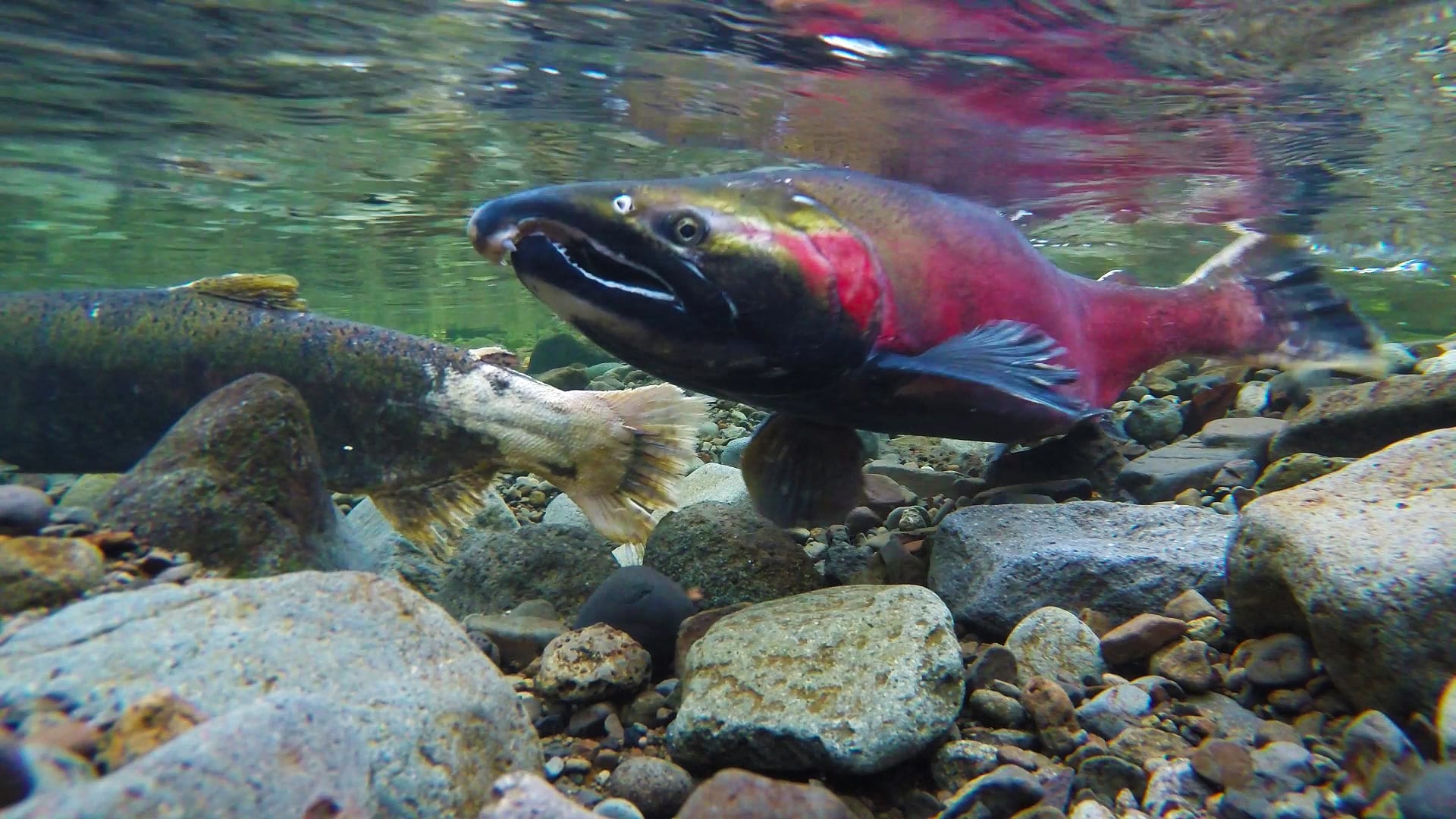The annual upstream migration of salmons to their spring spawning habitat is fairly well-known. However, most people may not know that this behavior is common among other fish species as well, including sturgeons, American shad, and American eels. The distance that fish travel during migration can vary widely – some fish do not need to migrate very far to reach their spawning habitats to reproduce, while salmons can travel for up to 200 miles to reach theirs. A bit too far for a booty call, if you ask me.

Unfortunately, there are currently barriers in the streams and rivers around the world that can hinder fish migration and have negative impacts on fish populations. For example, if a fish's migratory route is obstructed, they cannot reach their ideal spawning ground, and thus may forego producing offspring altogether. As a result, the number of new members being recruited into the population will decrease, and the population abundance will decline over time.
Common types of fish migration barriers include culverts, dams, and levees. There are currently more than 4,600 dams in Georgia alone, and the robust redhorse is an example of a fish species that occurs in Georgia whose migratory paths have been blocked by these dams. Adult robust redhorse prefer gravel patches that only occurs at certain spots in rivers for spawning. The dams prevent them from getting to those spawning habitats which is thought to contribute to their population decline.

While the most straightforward way to mitigate the negative effects of migration barriers is to remove the barriers themselves, this approach is often not feasible because these structures are used by humans for many purposes. For example, hydroelectric dams are used by power companies to generate power for nearby residents. Since removing the barriers is often not an option, the next best thing is to help fish get over the barriers during migration. There are several ways to help facilitate fish migration. Amusingly, an ingenious method is the fish cannon produced by a company named Whooshh. The fish cannon helps fish get over dams by, you guessed it, launching them from a “cannon†made up of a flexible tube over the barriers. Once the fish is inside the tube, a difference in pressure in front of and behind the fish acts as a force that pushes the fish from one end of the tube and out the other.

A more traditional and widely used method for facilitating fish movements is fish passageways, or fish ladders. There are several different designs for fish ladders, but the basic idea is that they are made up of an ascending series of small pools extending from the bottom of the dam to the top. Since the difference in height between the pools are short, fish can swim from one pool to the next fairly easily until they make it over the dam. Fish ladders can be found at certain dams in Georgia, such as the Juliette Dam made famous by the movie Fried Green Tomatoes.
One size does not fit all when it comes to fish ladder designs, however. For example, some fish ladders only work for good swimmers like the robust redhorse or salmon, but not for other fish such as American shad. A recent study showed that, less than 3% of American shad made it through all of the dams with fish ladders to their spawning habitats in three major rivers in the northeastern U.S.
Another potential downside of fish ladders is that, while they can help facilitate upstream migration, they are not as good at helping fish move downstream, which is important for fish that make roundtrip migrations and whose offspring need to migrate downstream to mature.

In the Paraná river in Brazil, the fish passageways near dams actually act as “ecological traps†that do more harm than good for the fish populations. In this case, when fish encountered the dams while swimming upstream, they used the ladder to get to the other side where the habitat condition was actually worse for spawning. If the ladder was not there, the fish could have stayed on the downstream side of the dam and looked for suitable habitats in the tributaries (side streams).
While fish ladders may not be a panacea for mitigating fish migration blockage, it is a way to help some fish migrate when barrier removal is not feasible. Additionally, some improvements have been made to make fish ladders more safe and efficient for fish passage. So, the next time you see a fish swimming upstream in a river, remember how many obstacles stand in their way to find mates, and how easy we humans have it in comparison!
About the author:
 |
Angela Hsiung is a PhD student in Warnell School of Forestry and Natural resources at UGA. She enjoys studying wildlife and fish ecology and conservation. Aspiring to be a master of none, when Angela is not at school, she can be found lagging behind a group of runners while gasping for breath, mis-identifying a bird, or failing spectacularly at playing “Sweet Home Alabama†on the guitar. You can contact her at solitaire.hsiung@gmail.com. More from Angela Hsiung. |
About the Author
- athenssciencecafehttps://athensscienceobserver.com/author/athenssciencecafe/April 17, 2020
- athenssciencecafehttps://athensscienceobserver.com/author/athenssciencecafe/April 12, 2020
- athenssciencecafehttps://athensscienceobserver.com/author/athenssciencecafe/April 3, 2020
- athenssciencecafehttps://athensscienceobserver.com/author/athenssciencecafe/March 30, 2020







